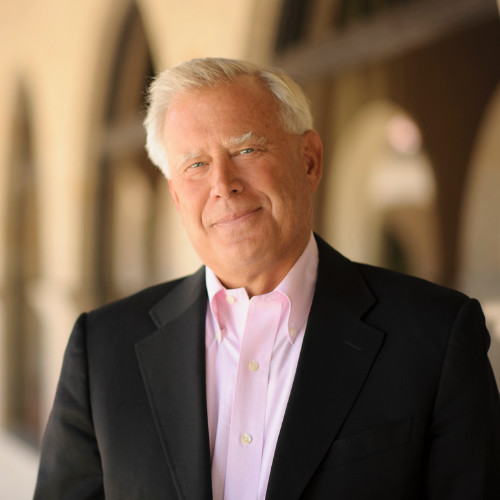
The Challenge Facing Best Buy
He became the new CEO of Best Buy in 2012, and he inherited a company that was on the brink of disaster. The company was losing market share to online retailers like Amazon, and analysts were predicting an eventual bankruptcy from Best Buy along with many other electronics retailers. The stock price was plummeting and the employee morale was low.
This was the situation that Hubert Joly faced. A lesser man, —a lesser leader —would have holed up in his office, with a big whiteboard and folders upon folders of Excel spreadsheets, reviewing data and trying to make sense of what to do next to successfully pivot a failing company. He would have relied on his experience, his own intelligence, and his intimate circle of advisors, and he would have attempted to fix the problems facing Best Buy on his own.
The "Renew Blue" Strategy
Instead, Joly approached the challenge by launching his “Renew Blue” strategy, named after the company’s blue shirt employee uniforms. His strategy consisted of the following:
- Employee Engagement: Joly believed that the frontline employees had the best insights into customer needs and operational inefficiencies. He spent his first weeks on the job working in Best Buy stores, talking to employees and customers. This hands-on approach continued throughout his tenure, with regular store visits and employee feedback sessions.
- Matching Online Prices: To combat "showrooming" (where customers would check products in-store but buy online), Joly implemented a price-matching policy. This was a risky move that could have hurt margins, but it helped retain customers and build trust.
- Partnering with Suppliers: Joly worked closely with major suppliers like Samsung and Sony to create store-within-a-store concepts. This improved the in-store experience and leveraged the expertise of brand representatives.
- Improving Online Presence: Best Buy significantly improved its e-commerce capabilities, including faster shipping and better integration between online and in-store inventory.
- Cost Cutting: Joly implemented $1.4 billion in cost cuts, but cuts but did so strategically. Unlike many turnaround situations, he avoided mass layoffs of store personnel, believing they were crucial to the customer experience.
- Training and Empowerment: Employees received enhanced training to provide better customer service. They were also given more autonomy to make decisions to satisfy customers.
- Capitalize on Services: Joly recognized that Best Buy's Geek Squad technical support service was a unique asset. He expanded services offerings, which provided a steady revenue stream and differentiated Best Buy from online-only retailers.
- Leveraging Real Estate: Instead of closing stores en masse, Joly saw Best Buy's extensive network of stores as an asset for quick delivery and in-store pickup of online orders.
The results of "Renew Blue" were remarkable:
- By 2019, Best Buy's stock price had quadrupled from its 2012 lows.
- Customer satisfaction scores improved significantly.
- Employee turnover decreased, and Best Buy became recognized as a top place to work.
- The company's online sales grew to comprise a much larger portion of overall revenue.
- Best Buy successfully positioned itself as a specialty retailer with expertise, rather than just a place to buy electronics.
Joly's approach demonstrated the power of engaging employees in problem-solving and strategy implementation. By valuing the insights of frontline workers and creating a culture of empowerment and continuous improvement, he was able to turn around a company that many had written off as doomed.
Insights from Leadership Experts
I am an avid student of leadership. I love reading leadership books, but I find interviewing incredible leadership experts even more enjoyable. I recently sat down to chat with Jim Haudan, founder and former CEO of Root Inc. (now part of Accenture) and discussed the importance of tapping into the latent potential of employees who are not fully engaged. Echoing the strategies employed by Hubert Joly at Best Buy, Hauden expressed that leaders should view business problems and opportunities as part of a grand adventure, and invite employees into the adventure. Hauden goes on to make the case that too often, leaders try to protect employees from the drama of company challenges, shielding them from information. Those leaders rely on their own intellect and experience— telling, directing, and selling their own ideas rather than genuinely working to tap into the intelligence, curiosity, motivation, and wisdom of their people (the latter being what Joly did in his first few weeks as CEO of Best Buy).


Jim Haudan
Could this be a huge root cause hindering employee engagement (and ultimately our company's results)? In the podcast discussion, Hauden pointed out to me that businesses are filled with employees who are engaged in every other area of life (e.g., their kids, side hustles, communities, etc.)…every area but work. Over the last 30 years, the percentage of employees engaged at work hasn't meaningfully changed…at all.
Putting Theory into Practice
What's the solution? Well, as an avid student of leadership, I try to put into practice the things I learn. So, early in 2024, I brought my whole team to Florida to problem-solve some of our larger challenges—challenges that had pained the sales organization for years prior to me arriving. Rather than relying on my own experience and intellect, I brought them into the drama of our company challenges, tapping into their intelligence, curiosity, motivation, and wisdom.
"Once you get people off the bench and into the game, they play in extraordinary ways that surprise even the most seasoned executives."
Jim Haudan
From my personal experience of trying this approach, here are a few ways you can more effectively tackle company or team challenges that you have before you…just like Hubert Joly and Jim Hauden recommend:
- Be honest. Don’t hide your challenges and the full context of those challenges out of fear. Bring your teams into the fold so they can clearly understand the challenges and implications of what you’re trying to address.
- Be clear. Don’t assume everyone understands what’s going on like you do. You have a unique perspective and vantage point of the situation at hand, and you must allow others around you to understand what you are seeing and the fuller context of why the challenge is important to solve.
- Be humble. Recognize that while you are in your position because you bring a unique value to your organization, your role as leader is not to “know it all”, but to assemble and empower a great team that can collectively know far more than you. Understand your limitations, and articulate them to your team, inviting them in to show you what you don’t understand or see.
- Be patient. You won’t solve major challenges in one meeting, or even five, sometimes. But the ongoing discussions, debates, and solutions generated will continue to stoke the fire of creativity and snowball into truly inspiring outcomes. Give it time, and don’t let your foot off the gas.
- Be creative. Make the process enjoyable —thinking and acting outside-the-box, trying new things and failing quickly, harnessing the learnings to rapidly create an outcome that actually does work and drives great results.
- Be inclusive. Don’t forget to include outside perspectives, involve cross-functional teams when relevant, and multiple layers of your organization when possible. Your solutions don’t only have to come from your team, or your level in the company. In fact, just like at Best Buy, many of the best solutions can come from the involvement of your frontline employees (whatever that may mean in your organization).
What problems are you trying to solve? What problems continue to nag you, quarter after quarter, year after year? Before you hire consultants, give up, or pass the problem to someone else, fully engage your broader workforce and try the suggestions above.
Renew Blue worked, not because of having smart leaders who holed up in their offices and debated challenges from sun-up to sun-down. Renew Blue worked because smart leaders recognized that when they were honest, clear, humble, patient, creative, and inclusive, they could generate outsized results that nobody believed were possible.
Do you believe? Go, and lead differently today!
Listen to the full podcast conversations featuring Jim Haudan in Part One and Part Two.
About the Author


Joel Onyshuk | Atana Senior VP of Sales
As the Senior VP of Sales at Atana, Joel Onyshuk is driven by his passion for building high-performance teams. Equipped with a Bachelor of Science in Psychology, he is committed to understanding human behavior and unleashing the potential of those around him. In addition to leading Atana's sales efforts, Joel hosts the Frontline Industry Podcast where he engages in conversations with top senior executives who share leadership best practices and ways to positively impact company culture.


Joel Onyshuk | Atana Senior VP of Sales
As the Senior VP of Sales at Atana, Joel Onyshuk is driven by his passion for building high-performance teams. Equipped with a Bachelor of Science in Psychology, he is committed to understanding human behavior and unleashing the potential of those around him. In addition to leading Atana's sales efforts, Joel hosts the Frontline Industry Podcast where he engages in conversations with top senior executives who share leadership best practices and ways to positively impact company culture.







